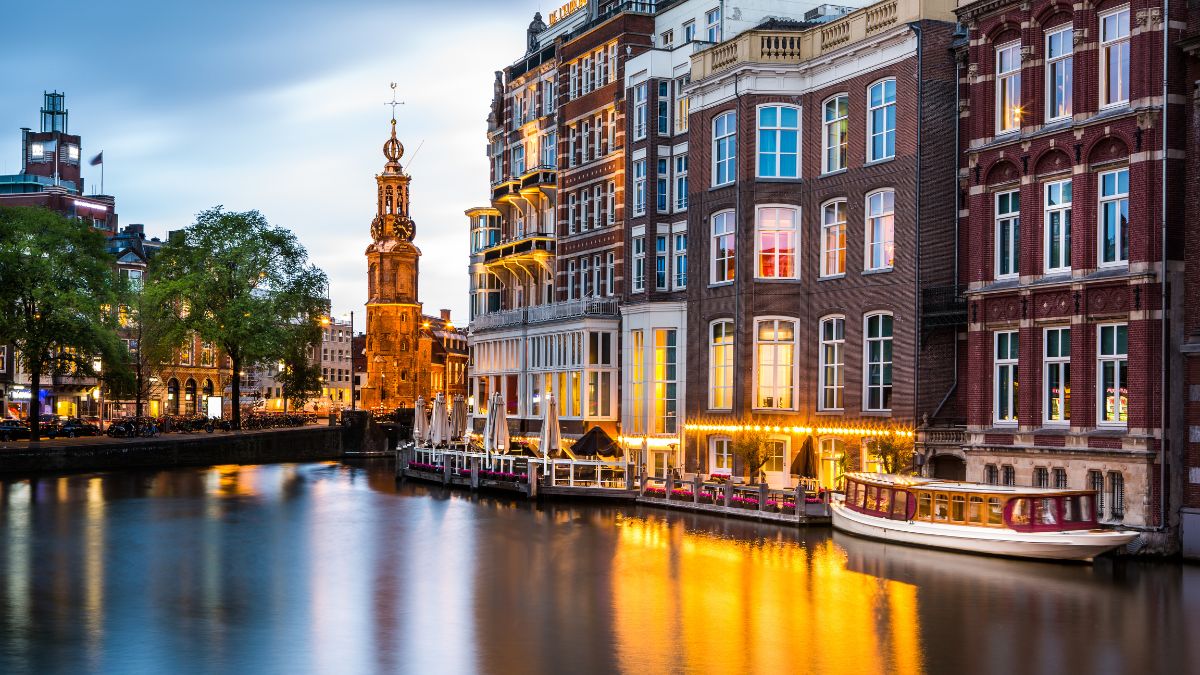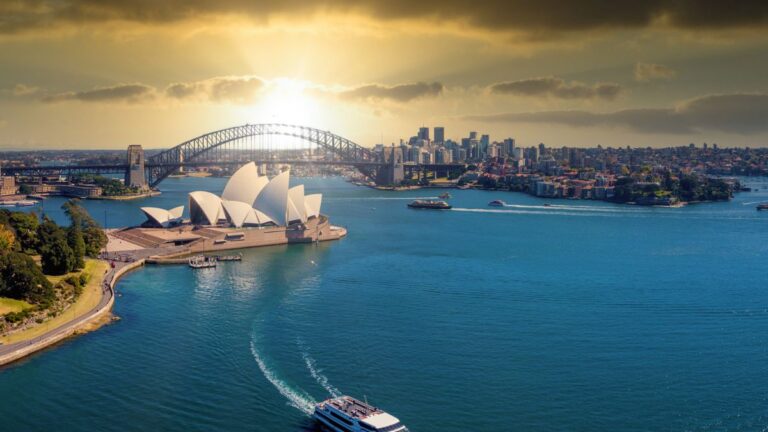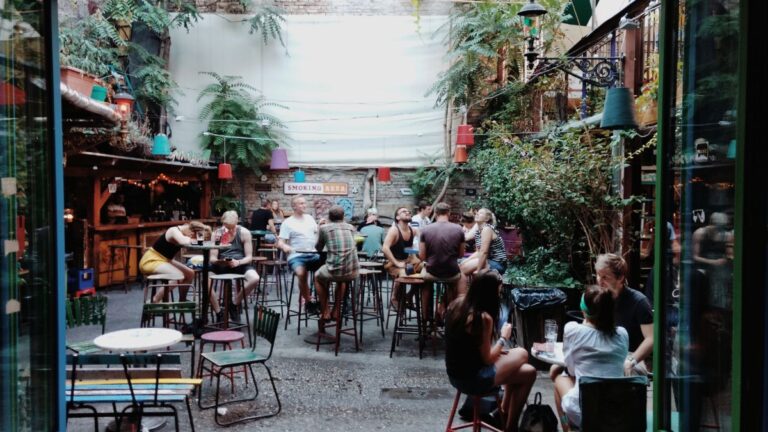Worst Time to Visit Amsterdam: Decoding the Seasonal Disadvantages

As participants in Amazon Associates and other programs, we earn from qualifying purchases. This comes at no additional cost to you. For more details, see our Affiliate Disclosure.
Amsterdam, with its enchanting canals, world-class museums, and rich history, is a must-visit any time of the year. However, just like any other tourist hotspot, there are certain times when visiting might not offer the best experience. While some might argue that there’s no wrong time to explore the Dutch capital, let’s delve into the seasonal nuances that might make some periods less favorable than others.
HIGHLIGHTS
- Rainy and cold winter months, especially from November to February, present challenging weather conditions for tourists.
- Overwhelming crowds are common during the peak tourist seasons of July and August, with attractions becoming notably congested.
- Specialty gardens, open-air exhibitions, and certain museums may face seasonal closures or limited operations, impacting tourist plans.
- Key events like King’s Day and major summer festivals can further heighten accommodation costs, transport disruptions, and limited availability.
Weather Woes: The Rain and Cold of Winter
Amsterdam’s picturesque canals and historical architecture take on a dreamy hue during winter, but this season also brings its fair share of challenges. The city’s maritime climate ensures that persistent rainfall is more the norm than heavy snow, often leaving visitors with dampened spirits and soggy shoes. If you’re keen on maximizing outdoor sightseeing, be wary of the short daylight hours, as the sun rises late and sets early, curtailing your exploration time.
While the romanticized image of locals ice-skating on frozen canals is a draw, it’s a rarity and not a yearly guarantee. When the freeze does come, it’s accompanied by icy conditions on streets and sidewalks, posing a slip hazard for the unprepared traveler. Additionally, Amsterdam’s cold is no silent beast; it roars in with bone-chilling winds, especially biting when you’re cycling beside the open canals.
However, every cloud has its silver lining, and in Amsterdam, it’s the culinary delights. The cold season offers an opportunity to indulge in the city’s hearty winter dishes. So, while the rain might deter your outdoor plans, the promise of a warm bowl of ‘erwtensoep’ awaits to comfort you.
Overcrowded Summers: Tourist Peaks to Watch Out For
As summer dawns upon Amsterdam, the city bursts into life with vibrant tulip gardens, sun-kissed canals, and lively street cafes. However, this allure isn’t lost on travelers, making summer the peak tourist season. High footfall in popular attractions such as the Anne Frank House, Van Gogh Museum, and the Rijksmuseum often translates to long waiting times and shoulder-to-shoulder crowds.
The picturesque canals, usually a serene retreat, see a surge in boat traffic, with tourist cruises jostling for space amidst local vessels. This influx also means that the city’s iconic bike lanes become bustling, requiring extra caution and patience, especially for those unfamiliar with Amsterdam’s cycling etiquette.
Accommodation rates skyrocket during these months, and finding a decently priced, well-located place to stay can become a challenge. Street markets, festivals, and public transport are packed, giving the city a vibrant yet congested feel.
While the energy of a bustling Amsterdam in the summer can be infectious, visitors must be prepared for the downsides of its popularity. Planning ahead, reserving tickets in advance, and occasionally escaping the central areas for quieter neighborhoods can make the experience more enjoyable.
The Lull of Autumn: Fewer Events and Shorter Days
Autumn drapes Amsterdam in a tapestry of gold and crimson, with fallen leaves lining the canals and a cooler, crisp air enveloping the city. While this season offers a respite from the bustling summer crowds, it also presents a quieter, more contemplative side of Amsterdam. The city’s event calendar sees a noticeable decline, with fewer festivals and street events in comparison to the livelier summer months.
As the season progresses, daylight dwindles significantly. Visitors will find that the sun starts to set earlier, compressing sightseeing hours and often necessitating early starts to make the most of the available light. This limited daylight might affect plans, especially for those keen on photography or outdoor activities.
The milder weather, although pleasant, can be unpredictable. Days might start sunny and suddenly turn rainy, necessitating layers and waterproof gear for those keen on exploring the city without interruptions.
However, what autumn lacks in events, it makes up for in ambiance. The reduced tourist flow offers a more authentic feel of Amsterdam, and the stunning fall foliage provides a picturesque backdrop. This is a time to cozy up in local cafes, take unhurried canal walks, and appreciate the Dutch capital’s quieter, more introspective mood.
Spring Challenges: Allergies and Unpredictable Temperatures
Spring in Amsterdam is often pictured as a vibrant spectacle of blossoming tulips, especially in iconic spots like Keukenhof Gardens. Yet, beneath the beauty, the season ushers in some challenges for travelers. One of the predominant concerns is the onset of pollen season, triggering allergies for many. Blooming flowers and trees release pollen into the air, causing sneezing, itchy eyes, and other allergic reactions for those sensitive to it.
Temperature fluctuations can be another hurdle. While spring symbolizes the end of winter, Amsterdam’s weather remains unpredictably temperamental. It’s not uncommon to experience a warm, sunny morning that swiftly transitions into a chilly, rainy afternoon. As a result, travelers are often advised to pack layers to adjust to the mercurial climate easily.
Also, while spring marks the beginning of the tourist season, some attractions might still be operating on winter hours or be in the process of transitioning from their winter setups. This can mean unexpected closures or limited access to certain venues and activities.
Yet, despite these challenges, spring’s charm is undeniable. The city awakens with vibrant colors, and there’s an air of rejuvenation. By staying prepared and flexible, visitors can navigate the springtime quirks and immerse themselves in Amsterdam’s rejuvenated spirit.
Festival Frustrations: Navigating the Busiest Events
Amsterdam is renowned for its eclectic range of festivals, spanning art, music, film, and more. While these events add a dynamic flair to the city’s cultural landscape, they often come with their own set of challenges for visitors. Festivals, especially the major ones, can draw crowds in the tens of thousands, leading to overcrowded venues and public spaces.
King’s Day, for instance, turns the entire city into a sea of orange, with revelers filling every nook and cranny. While the energy is palpable, it can be overwhelming for those not anticipating the crowd density. Transport during such large-scale events can become a headache, with diversions, delays, and packed trams making it tricky to navigate the city.
Accommodation is another sore point during big festivals. Hotels and rentals often get booked months in advance, and prices soar due to the high demand. For the unprepared traveler, this can lead to last-minute scrambles to find a place to stay or settling for less-than-ideal lodging at premium prices.
The popularity of festivals also means that tickets for key events or performances can be hard to come by, necessitating advanced booking or facing the disappointment of missing out.
However, with a bit of foresight and planning, it’s entirely possible to enjoy Amsterdam’s vibrant festival scene without the associated frustrations. By researching event dates, booking in advance, and being prepared for larger crowds, visitors can immerse themselves in the festivities while sidestepping potential pitfalls.
High Prices and Fully Booked: Accommodation and Transport Challenges
Amsterdam’s popularity as a travel destination, marked by its rich cultural tapestry and vibrant nightlife, often leads to peak tourist seasons where accommodation and transport see heightened demand. This surge can result in skyrocketing prices and limited availability, presenting challenges for travelers eager to experience the Dutch capital’s charm.
Accommodation Challenges
The quest for a comfortable and reasonably priced stay in Amsterdam becomes a challenge during its peak seasons. Hotels in prime locations, such as Jordaan or the Canal Ring, often see full bookings months in advance.
This not only forces visitors to consider less central areas but also pushes hotel rates higher. Moreover, alternative lodging options like Airbnb and hostels are not immune to this surge.
With an increased number of travelers, these platforms become competitive spaces, sometimes offering prices comparable to hotels, without the same amenities.
Transport Challenges
Navigating the city during these peak times takes on a new dimension of challenges. The typically efficient tram and bus systems can become overcrowded, leading to longer wait times and congested rides.
For those who dream of cycling through Amsterdam’s picturesque lanes, be prepared for a dual challenge: bike rental prices often increase during these periods, and the already busy bike lanes become even more bustling.
Additionally, those flying into the city might find that airfares are steeper, and the most convenient flight routes are quickly booked up, necessitating more layovers or alternative travel plans.
Limited Availability: Seasonal Closures of Key Attractions
Amsterdam, while celebrated for its year-round appeal, does see certain attractions taking a seasonal hiatus. These periodic closures, often meant for maintenance, renovations, or simply due to off-season lulls, can be a disappointment for visitors who arrive with a checklist of must-see spots.
Some of the city’s outdoor attractions, such as specialty gardens or open-air exhibitions, often close or reduce their operating hours during the colder months. They do this to protect delicate flora and to account for the decreased foot traffic.
Museums, although mostly operational throughout the year, might have rotating exhibits. This means that certain sections could be closed off for a brief period, making way for new installations or undergoing refurbishments.
Moreover, canal cruises, a favorite among tourists, may see a reduction in frequency during off-peak seasons. The reasons can range from weather conditions, particularly during icy winters, to simply a reduction in demand.
Lastly, some of the smaller, niche attractions that don’t cater to mass audiences might choose to close entirely during certain months, believing that the limited visitors wouldn’t offset operational costs.
For the discerning traveler, it’s vital to research and plan ahead. While Amsterdam will always have plenty to offer, ensuring that specific attractions are open during your visit will guarantee a more fulfilling experience in the Dutch capital.
Navigating the City: Transportation and Cycling in Adverse Conditions
Amsterdam’s intricate network of canals, narrow lanes, and historic architecture, while enchanting, can pose challenges when it comes to transportation, especially during adverse conditions. From icy winters to sudden rainstorms, the city’s weather patterns can affect both public transport and the iconic Amsterdam cycling experience.
Public Transportation Hurdles
The city’s tram and bus systems, usually efficient and timely, can face disruptions due to unexpected weather conditions. Heavy rainfall or snow might cause delays, leading to longer wait times and potentially missed connections for travelers.
Additionally, certain routes, especially those running close to canals or less-maintained areas, might face temporary halts in the case of flooding or snow accumulation.
The Challenges of Cycling
Cycling, an integral part of Amsterdam’s culture, comes with its own set of challenges during adverse conditions. Wet cobblestone streets and slick tram rails can become hazardous for cyclists, leading to potential slips and falls. Winter adds another layer of complexity, with icy patches making navigation tricky, especially for tourists unfamiliar with the terrain.
Moreover, the city’s unpredictable rain can catch cyclists off-guard. While many locals are adept at cycling with an umbrella in hand, newcomers might find this skill challenging to master. Ensuring you have a reliable raincoat or poncho can make the experience less daunting.
Making the Best of It: Tips for Those Who Can’t Avoid the Off-Peak Times
Traveling to Amsterdam during its off-peak periods, while presenting some challenges, also offers unique opportunities to experience the city in a different light. From uncrowded streets to the serene ambiance of the canals, there’s still plenty to enjoy. Here are some tips to make the most of your visit during these times.
1. Embrace the Indoors: While some outdoor attractions might be less accessible, Amsterdam boasts a plethora of indoor wonders. Dive into its rich history by visiting museums like the Rijksmuseum or the Van Gogh Museum. Spend an afternoon in one of its many cozy cafes, sipping on Dutch cocoa and sampling local pastries.
2. Explore Alternative Attractions: With mainstream attractions potentially crowded or closed, it’s an excellent opportunity to discover the city’s hidden gems. Lesser-known museums, local art galleries, and quaint neighborhoods off the beaten path can offer a refreshing perspective.
3. Stay Flexible and Plan Ahead: Given the unpredictability of weather and potential closures, having a flexible itinerary can be a lifesaver. Additionally, always check the operational hours of places you intend to visit and consider booking tickets online to avoid long queues.
4. Dress Appropriately: Whether braving the cold, rain, or wind, dressing in layers and waterproof attire can make your exploration much more comfortable. Consider investing in good quality rain boots or an umbrella if visiting during the rainier seasons.
5. Opt for Guided Tours: Joining guided tours can be beneficial during off-peak times. Not only do tour guides have a wealth of knowledge about the city, but they’re also adept at adjusting itineraries based on current conditions and can provide insights you might otherwise miss.
6. Engage with Locals: With fewer tourists around, off-peak times can be the best for genuine interactions with locals. Engage in conversations at cafes, attend local events or workshops, and get recommendations for places that might not be in every guidebook.
Remember, every season and time frame brings its own charm to Amsterdam. By staying adaptable and open-minded, even off-peak visits can turn into unforgettable experiences filled with unexpected delights.






